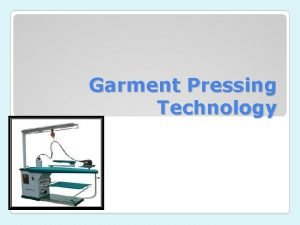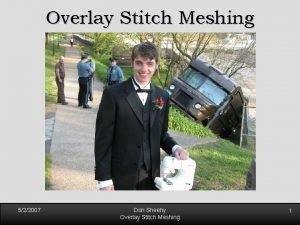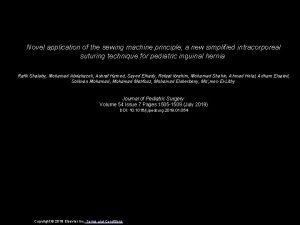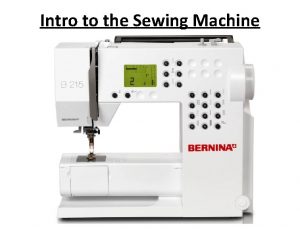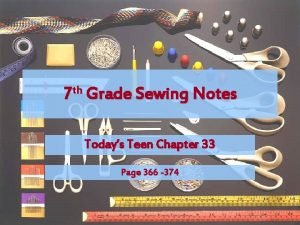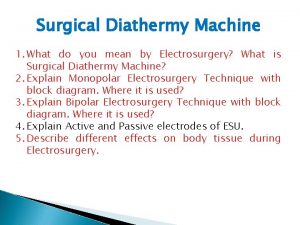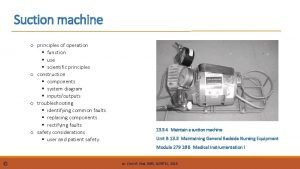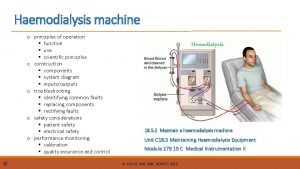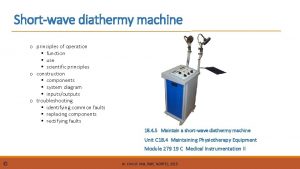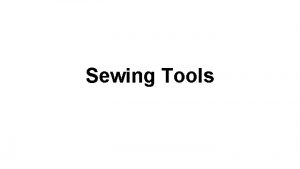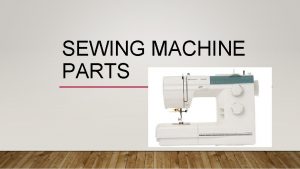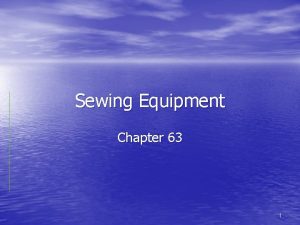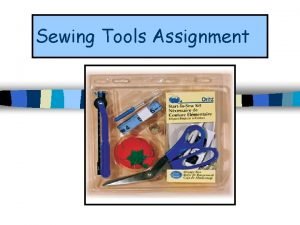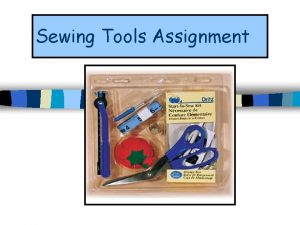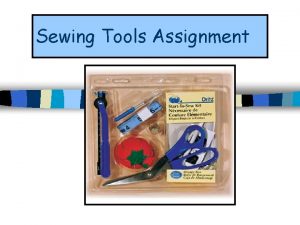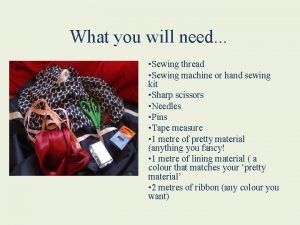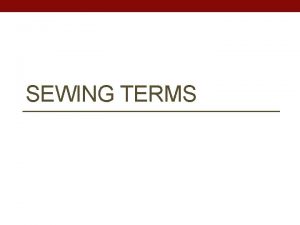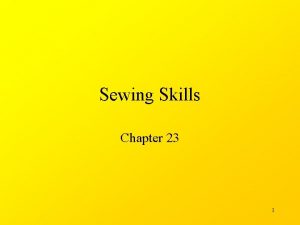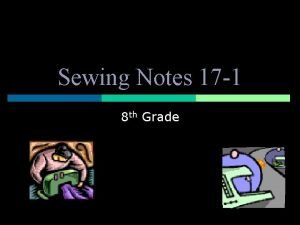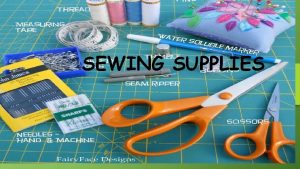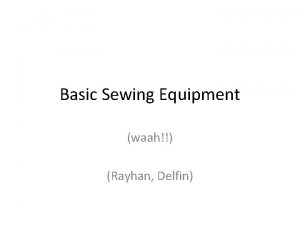THE SEWING MACHINE INTRODUCTION PARTS OF THE SEWING

















- Slides: 17

THE SEWING MACHINE

INTRODUCTION

PARTS OF THE SEWING MACHINE Complete Tasks 1 a and 1 b on your worksheet.

PARTS OF THE SEWING MACHINE

PARTS OF THE SEWING MACHINE

COMMON FAULTS AND REMEDIES Complete Tasks 2 on your worksheet.

COMMON FAULTS AND REMEDIES Loops on wrong side of stitching: The upper tension is too loose or machine is not correctly threaded. Check threading and tighten upper tension. Loops on right side of stitching: The upper tension is too tight or machine is not correctly threaded. Check threading and loosen upper tension. Missed stitches: Change the needle as it could be bent, blunt, incorrectly fixed or is not the correct size for fabric. Check threading.

COMMON FAULTS AND REMEDIES Thread breaking: The tension disk is set too tight so it needs to be loosened or the needle is bent or is too fine so it needs to be changed. Puckered seams: The tension is set too tight so it needs to be loosened. Stitches not interlocking: Needle may be inserted backwards. Insert needle properly, check that it is the right size and is not bent and check that the machine is correctly threaded.

COMMON FAULTS AND REMEDIES Broken needle: Needle could be damaged or inserted incorrectly. Insert properly, check that it is the right size and is not bent and check that the machine is threaded correctly. Material not moving under presser foot: The fabric may be too thick (or too many layers of fabric). Remove fabric and check there is no thread jammed at the bobbin compartment, throat plate or anywhere else in the machine.

SEWING MACHINE NEEDLES There are different types of sewing machine needles which are changed according to the type of fabric being used. Eg: • Regular point needles: for woven fabrics • Ball point needles: for knit fabrics • Chisel point needles: for leather (punch through fabric) • Denim needles: for thicker fabrics. • Twin/Triple needles: two/three needles joined in a row which stitch at the same time- very decorative. There also different needle sizes (according to thickness of fabric):

SEWING MACHINE ATTACHMENTS

PREPARING THE SEWING MACHINE FOR SEWING

PREPARING THE SEWING MACHINE FOR SEWING 1. Prepare the basic parts needed to sew: • • Choose the right size and type of needle according to the fabric and insert it in the needle clamp with the flat side towards the back. Attach the appropriate sewing machine foot. Wind the bobbin (see Youtube video on next slide). Insert the bobbin in the bobbin case (see Youtube video on next slide).

PREPARING THE SEWING MACHINE FOR SEWING Winding the bobbin: Inserting the bobbin into the bobbin case:

PREPARING THE SEWING MACHINE FOR SEWING 2. Thread the sewing machine • Choose the correct thread for your fabric and make sure you are not using tacking thread. • Thread the machine according to the instructions. (see Youtube video on next slide)

Threading the sewing machine:

PREPARING THE SEWING MACHINE FOR SEWING 3. Select the correct stitch and length. 4. Test the sewing machine on a piece of scrap fabric.
 What part of the sewing machine where feet are stationed
What part of the sewing machine where feet are stationed Label sewing machine parts
Label sewing machine parts What is under pressing
What is under pressing Don sheehy
Don sheehy Seam ripper target
Seam ripper target The sewing machine novel
The sewing machine novel Stitch plate definition
Stitch plate definition Marking tools in sewing
Marking tools in sewing Finite state machine vending machine example
Finite state machine vending machine example Moore and mealy machine
Moore and mealy machine Moore machine
Moore machine Energy work and simple machines chapter 10 answers
Energy work and simple machines chapter 10 answers Solid state surgical diathermy
Solid state surgical diathermy Circuit diagram of a suction machine
Circuit diagram of a suction machine Phototherapy range
Phototherapy range Orthographic projection and isometric projection
Orthographic projection and isometric projection Hemodialysis machine parts and function
Hemodialysis machine parts and function Short wave diathermy machine parts
Short wave diathermy machine parts


